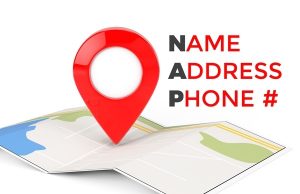
The last few years have seen some significant changes in the world of SEO and organic search. Google, the acknowledged industry leader, has issued a steady stream of algorithms and updates that have changed the basic rules of engagement for webmasters and SEO professionals.
These updates, Penguin and Panda in particular, were designed to cut down on web spam and to penalize less than reputable sites using black hat SEO tactics to falsely improve their page rankings.
While essentially a noble ambition, it has led to some less than noble pursuits.
Black hat SEOs, like the scorpion of legend, can’t change their nature. If they can’t use black hat tactics to boost their own page rankings, they’ll use them to destroy their competitors rankings.
Welcome to the world of Negative SEO.
What Exactly is Negative SEO?
Negative SEO is nothing new, although until very recently it has always been a marginal practice. Google insists that it is still a marginal practice, but anyone who has been on the wrong side of a negative SEO attack knows better.
Negative SEO is the practice of using low quality links to essentially tank a website from the rankings.
Essentially, negative SEO involves using black hat tactics to sabotage a competitor’s page ranking. Negative SEO can take a number of different forms, including:
- Creating hundreds of spammy links to a website
- Removing a website’s strongest links
- Creating fake social media profiles to sully a competitor’s online reputation
- Scraping content, and re-posting it all over the internet
Make no mistake, negative SEO is a real threat and it’s important to know how to spot the tell-tale signs before they can do real damage to your website, and your online reputation.
Let’s look at a few of the most common negative SEO tricks, and how to spot them.
Monitor Your Backlink Profile
Where negative SEO is concerned, your backlink profile is the most vulnerable part of your website. Black hats applying negative SEO like to build a large number of low quality links to a site, in an effort to prompt a Google penalty or force a slip in the SERPs.
It’s an effective tactic, because it plays right into Google’s hands. Google only wants to see high quality links on your website, so a flurry of spammy links can quickly cause significant damage.
Moreover, that sudden spike in links is going to get the attention of the Penguin and the Panda, ensuring that Google will be scrutinizing your site.
To protect yourself, you need to constantly monitor your backlink profile. Tools are available, like Open Site Explorer and ahrefs, or even Google Webmaster Tools to keep on eye on your backlinks.
These tools make it easier to keep track of new links, so that they can be removed or disavowed when necessary.
Protect Your Strongest Backlinks
In addition to swamping your site with spammy backlinks, black hats will also often try to destroy your strongest links.
They will contact the owner of the link, using your identity, and ask that it be removed. The best protection against this tactic, is to always communicate with other webmasters using an email address from your own domain.
This makes it harder for hackers and black hats to impersonate you online. I personally delete all outreach emails coming from free email service providers, such as Gmail.
Again, monitoring your backlink profile is imperative. Sort your backlinks by Domain and Page Authority or social activity, and tag the ones that are most valuable to your site.
Keep abreast of their status, and watch for any changes. If a link is removed, contact that webmaster immediately to see what happened.
This is even more true for sites such as Wikipedia where almost anyone can pose as an “editor” and make update suggestions.
Watch your most important links very closely using a spreadsheet, or use a tool like Raven to setup link monitoring.
Beware of Content Scraping
Another negative SEO tactic favored by spammers and black hats is content scraping. They copy your unique content, and publish it anywhere, and everywhere, they can.
We know that Google frowns on duplicate content, so if your work starts showing up all over the internet there’s a good chance you’ll soon be getting a penalty.
You can keep track of your content, and see if it is being copied onto other sites, using Copyscape. This free online service makes it easy to search the internet for stolen content. Simply add your webpage, or the text of the article in question, and Copyscape will search the internet for duplicate copies.
Monitoring Social Media
Social media can be a powerful tool in the right hands, and it can be just as powerful in the wrong ones. Spammers will often set up fake social media accounts using a competitor’s identity, or will flood forums and review sites with fake testimonials.
Just as good social media interaction can help build your brand and promote your website, bad social media interaction can be used to damage you.
Tools like Mention allow you to monitor your social media mentions. Anytime you or your brand are mentioned on a forum, blog, or social media platform, you will be notified. This will help you protect your identity, and your online reputation.
If you find your reputation is being maligned online, it’s time to go into damage control mode.
Negative SEO is nothing new, but it has taken on a new prominence. As Google continues to crack down on spammy websites, black hat SEOs will find new ways to achieve their goal of gaming the SERPs.
Moving forward, solid SEO will be as much about protection, as it is about promotion.
(421)







